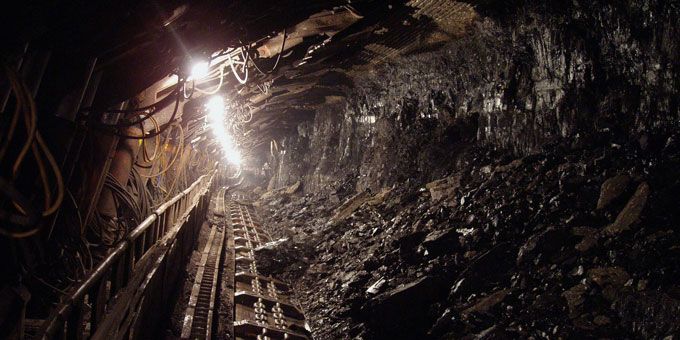The IEA predicts the world's renewable energy capacity will increase by 50% between now and 2024. This rise in renewable energy usage is mostly due to solar PV, which is becoming favorable in a wide range of industries.
 How Did Wind and Solar Become Cheaper Than Coal?
How Did Wind and Solar Become Cheaper Than Coal?

Megan Nichols | Schooled by Science
Once restricted by expensive governmental subsidies, wind power and solar energy are now available for mass production at lower costs. Companies and residential homes are no strangers to renewable energy, but it's often been expensive to implement due to its perceived riskiness. People were reluctant to jump on such a new trend without a guaranteed ROI. However, now that solar and wind energy have proven their effectiveness — and urgent necessity — businesses are willing to spend for renewable options.
This movement spells a hopeful future for a planet overtaxed by climate change, though widespread adaption will be gradual. Coal is becoming more expensive to sustain, while greenhouse gas emissions are still rampant. It's becoming urgent to adopt alternative energy methods as islands sink, ice melts and ecosystems die — and continually lowering prices are making these alternate sources more accessible than ever.
Make Way for Affordable, Renewable Solutions
The IEA predicts the world's renewable energy capacity will increase by 50% between now and 2024. This rise in renewable energy usage is mostly due to solar PV, which is becoming favorable in a wide range of industries. Businesses can save a significant amount of money on utility bills from implementing solar power, which is more than enough incentive for some to switch.
Residential areas come last in solar PV use, but make no mistake — the number of solar panels on homes will also significantly increase. People who couldn't afford it before will now jump in with both feet. The drastic drop in renewable energy prices for residences is largely due to the solution's high demand.
For years, financial institutions viewed renewable energy as risky investments, so interest rates were high. Now that mass implementation of renewable energy sources has spread, however, it's become more affordable than ever. Solar power costs have fallen by around 25% since the early 2000s, and the costs of other renewables are on its heels — largely due to increases in supply.
China, the U.S. and various other countries are taking hold of offshore and onshore wind power. The U.S. is currently working to establish offshore wind farms with turbines five times the size of the offshore machines presently available. Though wind energy has historically come in behind solar and hydropower, researchers expect it to make a notable increase in the upcoming years. The omnidirectional qualities of vertical-axis turbines make harnessing wind convenient, and these models are likely to find relevance in areas where the wind is unpredictable.
As renewable energy spreads across various industries, businesses will need to reconsider how they source their electricity. Pacific Northwest National Laboratory states about 20% of energy use in the U.S. comes from commercial buildings. Bringing this number down by even a few points will make a generous impact on resource depletion and utility costs. A combination of governmental aggregation and wind and solar energy will allow companies to save money while converting to cleaner power — an incentive that's proving increasingly irresistible to many small and large businesses.
Increased Efficiency Means More Money Saved
Wind and solar power sources have undergone major upgrades since the beginning of renewable energy, leading to higher efficiency. The rotor diameters of wind turbines have increased, facilitating improved wind project capacities. Bigger turbines create more electricity for the grid, which is why many countries have shown a preference for offshore structures. In 2017, these larger turbines displayed wind capacities of 2.32 MW — an 8% increase from 2016.
Scientists have proposed creating ultra-efficient solar PV panels with singlet exciton fission, a process that energizes photons to higher levels. Solar panels lose a percentage of the sunlight they capture because not all of these rays can be converted to usable energy. However, scientist-developed cells can harness additional light and prevent the thermalization loss.
In the past, critics have commonly argued about renewable energy's efficiency due to its fickle nature. What happens when the sun sets or the wind doesn't blow? Energy storage has helped diminish this problem. Batteries can store electricity for hours after sunset, providing light and energy to buildings at night. Wind-generated power works the same way — once you direct the power to a battery, you can keep reaping the benefits long after the wind stops.
What This Means for Coal
As wind and solar become cheaper, coal prices rise. Many operations have had to install pollution control mechanisms due to growing concerns about the effects of coal use. Companies are beginning to adopt a negative mindset about coal production, finding it energy-intensive and less efficient than other renewable options. The question, though, is whether they'll still substitute coal for wind and solar. Coal-supplied energy is still widespread, despite cheaper and safer choices.
The average sales price for coal in 2017 was $39.09, which has likely seen an increase since then. This amount only covers the expenses of coal designated for the electricity sector — the kind used for steel- and iron-making is even more expensive. The current costs for running coal plants can reach $111 per MWh, while solar and wind reach only $52 per MWh and $88 per MWh, respectively. The cost crossover study from Energy Innovation reveals many coal operations cost more to run than what they're worth.
Coal production has fallen out of favor with many due to its pollution, costs and energy waste. Companies will benefit from implementing solar and wind power on a gradual scale. Total coal replacement is unlikely for the near future, but it would put a major dent in climate change. For now, revamping the world's energy usage step by step is the best strategy.
Renewable Resources Create Cleaner Futures
Wind and solar power are making significant advancements in the energy sector, and the momentum won't slow anytime soon. If enough companies switch, they can push down the threat of global warming and keep the planet livable for all. Environmentalists and energy professionals alike seek this increasingly exciting goal — clean energy for the entire world.
The content & opinions in this article are the author’s and do not necessarily represent the views of AltEnergyMag
Comments (0)
This post does not have any comments. Be the first to leave a comment below.
Featured Product

